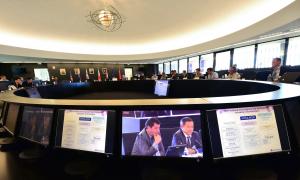This integrated plant simulator will serve several purposes. By precisely mimicking the behaviour of the scientific installation in both normal and incidental conditions, it will help validate all foreseen operational scenarios. It will also support the development of operating procedures and instructions and, of course, serve as a training platform for future operators.
The challenge is considerable: ITER is not just a tokamak but a complex combination of systems that are totally different in scope, size and nature. Some, like cryogenics or cooling water, are the size of a large industrial site and operate like one; others, like diagnostics, form a collection of small and nimble sensors and calculators more typical of a lab rather than a factory. These plant systems are governed by more than 200 individual plant instrumentation and control (I&C) systems.
ITER can be compared to an aircraft carrier with systems as different as ship propulsion, radar, catapult, communications, and aviation that must all work in perfect coordination and harmony to ensure mission success.
The task might appear daunting, but as Ryuji Yoshino—head of the Operation Management Section/Division and former plasma operator at the Japanese tokamak JT-60—explains, "we are not starting from scratch. We already have several individual simulators (for plasma, cryogenics, cooling water, etc.) and a few more are in development. The aim now is to have them all in one."
Whether provided by industry or developed internally, the available individual simulators cover a wide range of technologies and speak different languages, each with its own tempo (some are designed to simulate microseconds events, while others replicate slow-evolving dynamics). The integrated plant simulator projected for ITER was discussed at length on 19-21 April in a workshop that gathered some 50 people from ITER, the Domestic Agencies and industry.
"We are at the very beginning of a long process," says Yoshino. "At this stage, it is important to gather the available expertise, assess the time it will take to develop an integrated simulator and, eventually, provide a report for resource allocation."
Based on experience from industry, it would take five to six years to develop an integrated simulator for an installation of ITER's scope and complexity. The consensus at the workshop was that it was now urgent to start the process in order to be ready for the initial phase of ITER operation.


